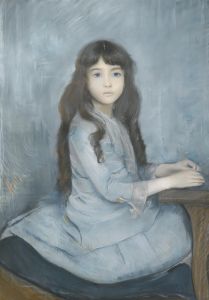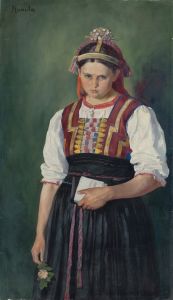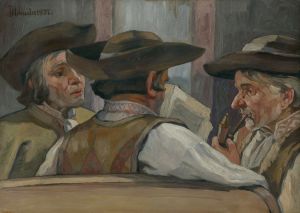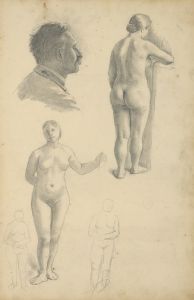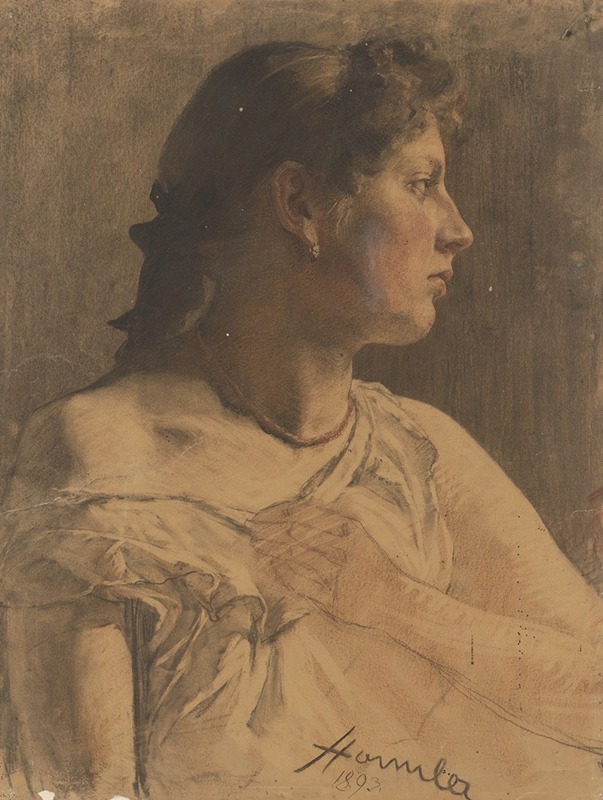
Portrait of a Woman
A hand-painted replica of Jozef Hanula’s masterpiece Portrait of a Woman, meticulously crafted by professional artists to capture the true essence of the original. Each piece is created with museum-quality canvas and rare mineral pigments, carefully painted by experienced artists with delicate brushstrokes and rich, layered colors to perfectly recreate the texture of the original artwork. Unlike machine-printed reproductions, this hand-painted version brings the painting to life, infused with the artist’s emotions and skill in every stroke. Whether for personal collection or home decoration, it instantly elevates the artistic atmosphere of any space.
Jozef Hanula was a Slovak painter known for his contributions to portraiture and religious art in the late 19th and early 20th centuries. His work often reflects the cultural and social milieu of Slovakia during this period. One of his notable works is "Portrait of a Woman," which exemplifies his skill in capturing the essence and character of his subjects.
"Portrait of a Woman" is a fine example of Hanula's ability to blend realism with a touch of idealism, a common trait in his portraiture. The painting showcases a woman whose identity remains unknown, which was not uncommon in portraiture of that era, as many artists focused on capturing the universal qualities of their subjects rather than specific individuals. The painting is characterized by its attention to detail, particularly in the rendering of the woman's facial features and attire, which suggests a careful study of the subject and a deep appreciation for the nuances of human expression.
Hanula's technique in this portrait demonstrates his proficiency with oil paints, a medium he frequently employed. The use of light and shadow in the painting highlights the contours of the woman's face, giving it a three-dimensional quality that adds to the lifelike representation. The color palette is subtle yet effective, with a focus on natural tones that enhance the realism of the portrait.
The background of the painting is relatively simple, drawing attention to the subject herself. This compositional choice is typical of Hanula's portraits, where the focus is primarily on the individual rather than the surroundings. The simplicity of the background also serves to emphasize the timeless quality of the portrait, allowing viewers to engage directly with the subject without distraction.
Jozef Hanula's work, including "Portrait of a Woman," is significant in the context of Slovak art history. His portraits often reflect the cultural identity and social conditions of Slovakia during his lifetime. Hanula was part of a broader movement of artists in Central Europe who sought to capture the spirit of their times through art, and his portraits are an important part of this cultural narrative.
While specific details about "Portrait of a Woman," such as the date of creation or the identity of the sitter, may not be well-documented, the painting remains an important piece within Hanula's oeuvre. It exemplifies his artistic style and his contribution to the tradition of portrait painting in Slovakia.
Overall, "Portrait of a Woman" by Jozef Hanula is a testament to the artist's skill and his ability to convey the depth and complexity of human emotion through portraiture. The painting continues to be appreciated for its artistic merit and its place within the broader context of Slovak art history.









